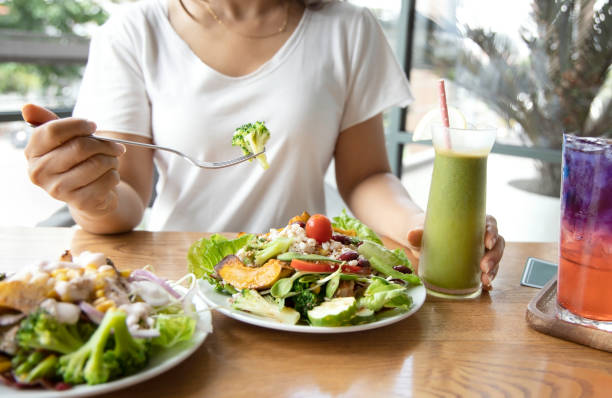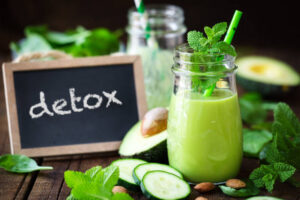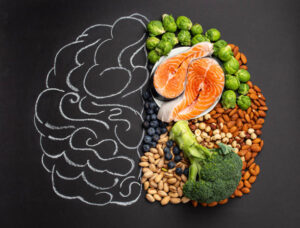The keto vegan diet is a new way of eating that combines low-carb keto principles with the kindness of veganism. It focuses on eating fewer carbs, more healthy fats, and several plant-based foods. By cutting out animal products and choosing nutritious plants, people can enjoy a diet that’s both healthy and kind to animals.
A big part of the keto vegan diet plan is finding the right balance between fats and fiber. Healthy fats give the energy needed to stay in ketosis, where the body burns fat for fuel. Meanwhile, fiber helps with digestion and makes you feel full. Together, they help with weight management and curb the urge to snack on high-carb foods. By focusing on this balance, people can eat in a way that keeps their bodies healthy while staying true to their values.
What is a Keto Vegan Diet
The keto vegan diet combines the low-carb focus of the ketogenic diet with the plant-based principles of veganism. It works by reducing carbs and increasing healthy fats and plant foods. This helps the body enter ketosis, a state where it burns fat for energy instead of carbs while staying true to the ethical and environmental beliefs of veganism.
Importance of Low Carbohydrates and High Fats
A key aspect of the keto vegan diet is its focus on low carbs and high fats. By cutting back on carbohydrates, the body shifts from using glucose for energy to burning fat instead. This not only helps with weight loss but also keeps blood sugar stable, reducing cravings and providing steady energy throughout the day.
In a typical keto vegan diet, carbs make up only about 5-10% of daily calories, with most coming from healthy fats and proteins. This balance is essential for staying in ketosis, which brings various health benefits like better brain function, increased fat burning, and longer-lasting feelings of fullness.
Key Components of the Keto Vegan Diet
To succeed on the keto vegan diet, it’s important to focus on a few key elements:
- Healthy Fats: Prioritizing good fats is crucial for reaching the right nutrient balance. Foods like avocados, nuts, seeds, coconut, and olive oil are excellent options. These fats provide energy, support heart health, and help your body absorb nutrients.
- Plant-Based Proteins: Instead of relying on animal proteins, the keto vegan diet encourages plant-based sources. Legumes, tofu, tempeh, seitan, and protein-rich nuts and seeds provide the needed protein while keeping carbs low.
- Fiber-Rich Foods: Fiber is key for good digestion and overall health. Including foods like leafy greens, broccoli, chia seeds, and flaxseeds helps with regularity and keeps you full, making it easier to stick to the diet’s low-carb goals.
The Role of Healthy Fats in Keto Vegan Diets
Healthy fats play a crucial role in the keto vegan diet, providing energy and supporting overall wellness while helping the body stay in ketosis. By choosing the right fats, you can fuel your body effectively and enjoy the health benefits of this diet.
Here are some of the best sources of healthy fats for a keto vegan diet plan:
- Avocados: Creamy and packed with monounsaturated fats, avocados also offer potassium, which helps balance electrolytes and keeps your heart healthy.
- Nuts: Almonds, walnuts, macadamia nuts, and pecans are full of healthy fats, fiber, and protein. They make great snacks or can be added to salads and smoothies for extra crunch.
- Seeds: Chia seeds, flaxseeds, and hemp seeds are rich in omega-3 fatty acids, fiber, and protein. They’re easy to mix into meals and add a nutritional boost to various dishes.
- Coconut Oil: Known for its medium-chain triglycerides (MCTs), coconut oil provides quick energy and is popular in cooking and baking.
- Olive Oil: Full of monounsaturated fats and antioxidants, olive oil is a heart-friendly option for dressings, marinades, or sautéing veggies.
Benefits of Incorporating Healthy Fats
Incorporating healthy fats into the keto vegan diet brings several advantages:
- Sustained Energy: Fats are a concentrated energy source, delivering more calories per gram than carbs or proteins. This makes them perfect for a low-carb diet, keeping energy levels steady throughout the day.
- Enhanced Satiety: Healthy fats help you feel full and satisfied, reducing the urge to overeat or snack on high-carb foods. This feeling of fullness can support weight loss by managing cravings and reducing overall calorie intake.
- Nutrient Absorption: Vitamins like A, D, E, and K are fat-soluble, meaning your body needs fats to absorb them effectively. Including healthy fats in meals can boost the absorption of these essential nutrients.
Healthy fats are essential for achieving and maintaining ketosis on a keto vegan diet. By cutting down on carbs and replacing them with fats, the body shifts from burning glucose to burning fat for fuel. This switch not only supports weight loss but can also improve mental clarity, stabilize energy levels, and promote better overall health.
Role of Fiber in Digestion and Overall Health
Fiber is a key nutrient that plays a vital role in digestion and overall health, particularly in keto vegan foods. Despite being commonly associated with carbohydrates, fiber is crucial for maintaining digestive balance and supporting long-term wellness.
- Digestion: Fiber aids in keeping the digestive system running smoothly. It adds bulk to stools, encouraging regular bowel movements and helping to prevent constipation. The gentle movement of food through the digestive tract, facilitated by fiber, also lowers the risk of digestive issues.
- Blood Sugar Regulation: Soluble fiber slows down the absorption of sugar, which helps keep blood sugar levels steady. For those on a keto vegan diet, this can be a big advantage, as it helps prevent the highs and lows that often come with carb-heavy diets while ensuring sustained energy throughout the day.
- Heart Health: Fiber, especially soluble fiber, is linked to lower cholesterol and better heart health. It binds to cholesterol in the digestive system, limiting its absorption and helping to lower overall cholesterol levels, which supports cardiovascular wellness.
Types of Fiber: Soluble and Insoluble
Understanding the types of fiber is key to making smart dietary choices, especially on a keto vegan diet:
- Soluble Fiber: Dissolves in water, creating a gel-like substance that slows digestion. This helps regulate blood sugar and lower cholesterol. Common sources of soluble fiber include oats, legumes, chia seeds, and fruits like apples and citrus.
- Insoluble Fiber: This does not dissolve in water and adds bulk to stools, promoting regular digestion and preventing constipation. You’ll find insoluble fiber in whole grains, nuts, seeds, and the skins of fruits and vegetables.
Both types of fiber are crucial for a well-rounded diet. The keto vegan diet plan encourages eating foods rich in both, helping to support digestion and overall health.
Sources of Fiber in a Keto Vegan Diet
Despite the keto vegan diet’s low-carb focus, there are still many fiber-rich plant-based foods you can enjoy:
- Leafy Greens: Spinach, kale, and Swiss chard are low in carbs and high in fiber and nutrients. They’re versatile and can be used in salads, smoothies, or sautéed.
- Legumes: While some legumes are higher in carbs, options like black soybeans and green peas can fit within a keto framework. They offer a great mix of protein and fiber.
- Chia Seeds and Flaxseeds: Packed with fiber and healthy fats, chia and flaxseeds are easy to add to smoothies, oatmeal, or use in puddings for extra nutrition.
- Broccoli and Cauliflower: These cruciferous veggies are both low-carb and high in fiber. They work well roasted, steamed, or blended into soups to add heartiness to meals.
Creating Balanced Meals
Creating balanced meals that include healthy fats and fiber is key to thriving on keto vegan diet foods. By focusing on how you compose your meals, you can enjoy a variety of delicious dishes while benefiting from the nutrition this unique approach offers. Here’s how to effectively transform your plate.
To make meals that are both satisfying and nutritious, aim to combine healthy fats, fiber-rich foods, and plant-based proteins. Here are some helpful guidelines:
- Start with a Base: Begin with leafy greens or low-carb vegetables. These add volume and fiber without significantly increasing carbohydrate intake. Great options include spinach, kale, arugula, or cauliflower rice.
- Add Healthy Fats: Incorporate healthy fats to enhance flavor, provide energy, and promote fullness. Add avocado slices, olive oil dressings, nuts, seeds, or coconut products. For example, drizzle olive oil over a salad or add a scoop of guacamole to your grain bowl.
- Include Plant-Based Proteins: Ensure your meals are filling and nutritious by adding a source of plant-based protein. Options like tofu, tempeh, edamame, or legumes (such as black soybeans) will boost satiety and provide essential amino acids.
- Mix in Fiber: Enhance the fiber content by including additional sources like chia seeds, flaxseeds, or fiber-rich vegetables. Sprinkle seeds over salads or blend them into smoothies for an extra nutritional boost.
Meal Ideas
Here are some delicious meal ideas that effectively combine healthy fats and fiber:
- Smoothies: Blend spinach, avocado, almond milk, chia seeds, and a scoop of plant-based protein powder for a nutrient-packed smoothie. This combination creates a creamy texture, provides healthy fats, and offers ample fiber, making it perfect for breakfast or a snack.
- Salads: Create a vibrant salad with mixed greens topped with roasted chickpeas, diced avocado, cherry tomatoes, cucumber, and a drizzle of tahini or olive oil. Adding nuts or seeds for crunch enhances the flavor while adding healthy fats and fiber.
- Grain Bowls: Build a hearty grain bowl with cauliflower rice or quinoa (in moderation). Layer with sautéed spinach, roasted sweet potatoes, avocado, and a sprinkle of hemp seeds for a satisfying meal that balances fats and fiber.
Health Benefits of Combining Fat and Fiber
Combining healthy fats and fiber offers many health benefits, especially for those following keto vegan diet foods. This powerful pairing supports overall health, helps with weight management, and promotes a balanced lifestyle. Here’s a simple breakdown of the key benefits:
How Fats and Fiber Help with Weight Management
- Feeling Full: Healthy fats, like those found in avocados and nuts, take longer to digest than carbohydrates. When you combine these fats with fiber, which also helps you feel full, you stay satisfied longer. This means you’re less likely to snack or overeat.
- Stable Energy Levels: Fats and fiber release energy slowly into your bloodstream. This helps prevent energy crashes that often happen with high-carb diets. When your blood sugar stays steady, you can better manage hunger and cravings.
How They Help Control Blood Sugar
- Slower Sugar Absorption: Fiber, especially soluble fiber found in foods like chia seeds and legumes, slows how fast sugar enters your bloodstream. When paired with healthy fats, this effect is even stronger. This is helpful for anyone on a keto vegan diet, which focuses on lower carbs.
- Less Craving: The combination of fats and fiber helps you feel full longer, which can reduce cravings between meals. This makes it easier to stick to your diet without reaching for unhealthy snacks.
Benefits for Heart Health and Digestion
- Heart Health: Healthy fats, especially those in avocados, seeds, and nuts, support a healthy heart. Diets rich in fiber and healthy fats can lower bad cholesterol and improve heart health.
- Digestive Health: Fiber is key for a healthy digestive system. It helps keep you regular and prevents constipation. When combined with healthy fats, this duo can also support good gut health, which is important for your overall well-being, immune system, and mental health.
Conclusion
The keto vegan diet is a new way of eating that balances healthy fats and fiber. It encourages people to choose plant-based foods that are good for their bodies and overall health.
By combining healthy fats like avocados, nuts, and seeds with fiber-rich foods such as leafy greens, legumes, and chia seeds, you can create satisfying meals. These meals help with weight management, keep blood sugar stable, and support heart health.
Follow our plan on how to go vegan and find many tasty options and new cooking ideas. Embracing this lifestyle can help you lead a healthier life where you feel good physically and emotionally. Starting with your meals can bring great benefits, and it’s worth the effort!







